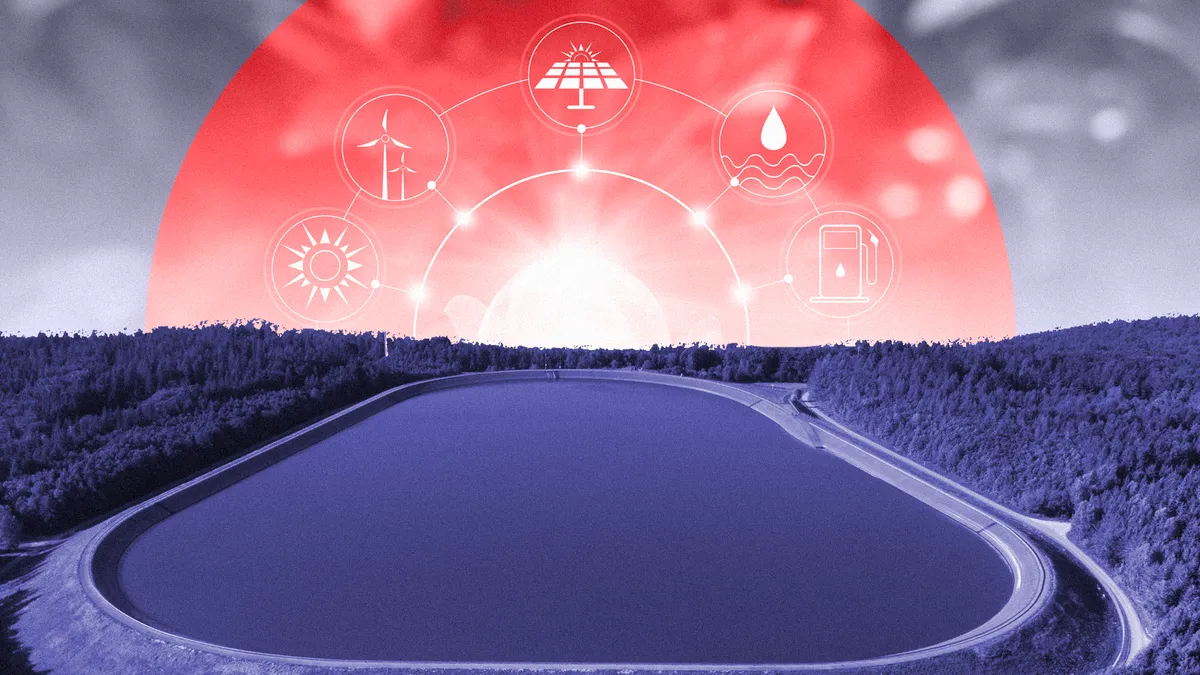Dive Brief:
- Closed-loop pumped hydropower facilities have the least potential among energy storage technologies to contribute to the problem of global warming, according to a recent analysis by the U.S. Department of Energy’s National Renewable Energy Laboratory.
- The analysis examined the global warming potential of different technologies that provide both short-duration and long-duration energy storage, including pumped storage hydropower, compressed air energy storage, utility-scale lithium-ion battery systems, utility-scale lead-acid batteries, and vanadium redox flow batteries.
- Pumped storage hydropower is a relatively established technology in the U.S. – in 2019, the country had around 22.9 GW of pumped storage hydropower generating capacity, accounting for 93% of its domestic energy storage capacity.
Dive Insight:
Energy storage of different durations is seen as critical to bringing more renewable energy onto the grid, since it helps provide a buffer between the supply and demand for electricity despite the intermittent nature of renewable energy.
A 2018 report from the DOE identified the potential for deploying another 36 GW of pumped storage capacity in the U.S. by 2050. However, there are still questions about the sustainability of pumped storage hydropower projects, and “little is known about how the environmental impacts from PSH compare to those of other storage technologies,” NREL noted.
Pumped storage hydropower uses the flow of water between two reservoirs at different elevations to store and dispatch energy. The technology is similar to a giant battery – the facility absorbs power to pump water into the upper reservoir, and passes that water through a turbine to generate power. Pumped storage systems can either be “open-loop” – which are hydrologically connected to a natural body of water – or “closed-loop,” which are not.
Closed-loop pumped storage hydropower is seen as a way to avoid some of the siting and permitting challenges associated with traditional pumped storage hydropower, according to the National Hydropower Association.
The NREL study takes a closer look at the global warming potential of pumped storage hydropower and four other storage technologies. Its pumped storage hydropower modeling is based on 39 preliminary designs from 35 proposed closed-loop sites in the U.S. The report assumes that the average closed-loop pumped storage hydropower project would have a storage capacity of 835 MW, and run off an entirely renewable electricity mix.
The study found that the global warming potential for pumped storage hydropower spans 58 to 502 grams of carbon dioxide per kilowatt-hour of stored electricity delivered to the closest substation connection point. Hydropower has the lowest global warming potential, followed by lithium-ion batteries, vanadium redox flow batteries, compressed air energy storage, and utility-scale lead-acid, according to the study.
“Closed-loop pumped storage hydropower is shown to be the smallest emitter of greenhouse gases,” Daniel Inman, senior scientist and group manager with NREL, and one of the authors of the report, said in a statement.
“[P]umped storage hydropower is about a quarter of the greenhouse gas emissions compared to compressed air,” he added.















